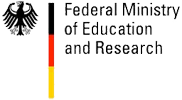| Research Mission: |
Past years have witnessed a growing demand for generally applicable methods to detect and quantify meaningful features in spatial data, for instance in two and three dimensional images or in high-dimensional point clouds. Recent developments look at such data through a topological lens: for instance, manifold reconstruction means to reveal the topological structure of a hidden manifold from a finite point sample. Another example is persistent homology which detects features like components, tunnels and voids, and also determines the scale on which the feature is present. The universality of the theory has turned computational topology into a vibrant research area with applications in image processing, sensor networks, cell biology, and astronomy. Typical in such applications is the interplay of topological methods with concepts from computational geometry, such as Delaunay triangulations or nearest neighbor search.
<div>
Our group is devoted to reveal further application areas of computational topology, to contribute to the algorithmic foundations to make such applications feasible in practice. This includes the exploration of further structural properties of the underlying topological and geometric concepts,
the design and analysis of efficient algorithms to compute topological invariants, and the development of mature and generally applicable software packages.</div>
Michael Kerber joined the Institute of Geometry at TU Graz in October 2015 as a full professor. |




